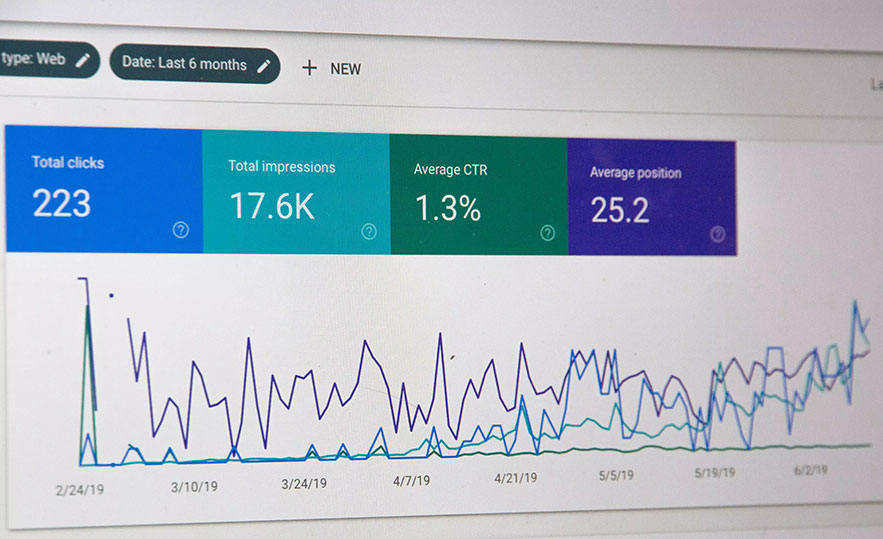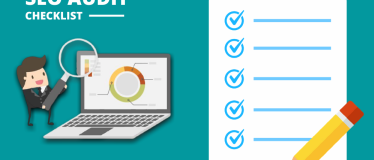Most SEO tips are confusing.
They’re either super technical or so generic you feel like you wasted 5 minutes of your life reading content.
At SEO Assassin we set out to make SEO simple and accessible. But, with SEO constantly changing, the search engine optimisation tips that worked last year can quickly become obsolete. 93% of online experiences begin at a blank search engine, so knowing how to apply the latest SEO tips is key if you want to increase your traffic.
With over 200 ranking factors contributing to Google’s algorithm, we’ve stripped back the white noise and left you with 28 ultra-powerful tips to optimise your site and supercharge your traffic.
To make things simple, we’ve broken our list into the 3 most important categories:
- Page Load Speed
- Customer Experience
- Brand Building
We’ve colour coded each tip so you’ll know exactly what aspect of your website you’re optimising. Turns out great SEO is simple after all.
Optimise For Mobiles

The majority of search traffic comes from mobile searches (statistically you’re probably reading this on a mobile device right now).
Optimising for mobile comes from thinking about the device you’ll be appearing on. Smartphone screens are smaller than desktop, so make your site design simple and intuitive. Navigation menus should be easy to find, with font size a minimum of 16 pixels. Anything smaller and people will have to pinch and zoom - which is the quickest way to drive people to your competition.
Google has a mobile-first approach to ranking, which means the mobile-version of your site is indexed and judged. If your site doesn’t load fast and create a welcoming user experience, your rankings will suffer.
Optimise Your Images
Optimising your images has 2 exciting SEO benefits.
- Optimised images can speed up your site’s load time which helps your user experience
- Many people search for images on Google, giving you another way of ranking your business
Your images should be compressed to reduce file size without losing quality. Free tools like Tiny PNG or OptimiZilla can help you compress files with zero tech knowledge.
You’ll also need to give each image a descriptive alt text (or alternative text) which helps Google “see” the image. Writing alt text is easy, just imagine you’re describing the picture to someone in the next room. Keep it simple and to the point, and use your target keyword if it’s a natural fit.
Test Hosting Providers and Servers
Google uses your site’s page loading speed as a ranking factor, so if your site is slow your rankings may drop. You can speed up your load times, while reducing website outages, by choosing the right hosting provider. The right mixture of price and performance is key.
You can also deliver a better user experience by load testing Content Delivery Networks (CDN) to cache your pages on servers around the world. This puts less stress on your original server and improves page download speed.
Invest in SEO Tools
A craftsman is only as effective as his or her tools.
There are many SEO tools you can use (both paid and free) to optimise your site and track your SEO results. Keyword research tools provide the terms people are using to search online, these include:
- Google Trends (free)
- Answer The Public (free)
- Keyword Surfer (free)
- Google Keyword Planner (free)
- Moz Keyword Explorer (paid)
You can also use SEO tools that track user engagement like SEMrush, Crazy Egg and Google Analytics. When using SEO tools, it’s best to start with one and master it before moving to the next, to avoid getting swamped with steep learning curves.
Measure SEO Performance

If you can’t measure it, you can’t improve it.
Tracking your SEO results will help you see what’s working and what needs tweaking. You should be measuring the changes you make AND the results.
There are many excellent tools you can use to measure your site’s SEO performance, including:
- SEMrush
- Ahrefs
- Crazy Egg
- Hotjar Google Page Speed Test
These tools will show you how people are interacting with your website. If you notice a problem, for example pages with a high bounce rate or underperforming form fields, you’ll know to make a change.
Research Relevant Keywords
Not all keywords are created equal.
Ranking #1 for a search term NO ONE is using is a waste of your time. Relevant keywords are those that deliver qualified traffic who are interested in your products and services. Don’t get caught in vanity metrics and chase keywords delivering 10,000 monthly searchers. These will be high-competition and held by sites you may never dislodge.
Instead, opt for low-competition keywords - even if they’re lower volume. These keywords are typically long-tail (consisting of more than 2 words and backed with commercial intent) and lead to more sales.
Spy On Your Competitors
When it comes to SEO, success leaves clues.
You can use the success of your competition to help you increase your rankings. Start by evaluating the content on the sites of competitors ranking above you. This will show you what Google is rewarding under their current algorithm.
Do they have in-depth articles? Are they using video content? Are they providing an angle no one else has seen yet?
Give your content a better chance of ranking by matching what your competition is doing then making your content 10x better. This is known as the Skyscraper Method and it’s a highly effective strategy.
You should also analyse the backlink portfolio of your competitor’s websites. Backlinks are a proven ranking factor and if your competition has secured links from quality and authoritative sites in your industry, you would benefit from doing the same. Keep in mind SEO results take time, so check back in regularly for any changes to your competitor’s content and backlinks.
Use an On-Page SEO Checklist
Creating an on-page SEO checklist will ensure you can track the necessary optimisation steps for each webpage. This will eventually become second nature, but until then create a simple checklist for you or your team to follow.
Your on-page SEO checklist should include:
- Page Title
- Meta Description
- Header Tags (H1, H2, H3 etc)
- Internal Links
- Outbound Links
- Formatting
Don’t make the mistake of stuffing your keyword in as much as possible. Use your keyword (or similar variations) in your Page Title and H1 tag, but focus on your user experience rather than Google’s algorithm.
Create Awesome Content
Content is king. Context is queen.
When you create awesome content that satisfies user intent, you’ll be helping increase your rankings and drive more traffic. Creating stellar content takes time and skill, with Google’s algorithm rewarding businesses who create valuable, relevant and high-quality content.
Enter your target keywords in Google to see what the top 10 results are. What does the ranking content have in common? You should aim to cover these topics as a minimum, while adding your own value in the form of:
- Images
- Videos
- Infographics
- Statistics
- Industry opinions
Content is so much more than the words on your website, so dive deep into your target topic and approach your keywords from multiple angles to create irresistible content.
Add Internal Backlinks
Internal links are like roads for your site visitors to go down. If you don’t provide a way for people to move from one page to the next, they may get frustrated and leave your website. This will impact your bounce rate, which can negatively affect your SEO.
Your internal links should direct to relevant pages where users would find relevant information. For example, if your content was about dog breeds but you had a page about dog food, this would be a natural opportunity to add an internal link.
Internal links also help Google crawl each page of your website, so by adding internal links you give your SEO a small boost.
Content Upgrading
Improving your rankings and traffic often comes down to working smarter, not harder. If you’ve got existing content on your website, you can speed up your SEO results by updating that content instead of creating content from scratch. This is known as content upgrading.
New content might take 6 months to rank on Google. In contrast, your existing content has likely already been crawled and indexed. It’s already on Google’s radar, by updating that content with new stats, opinions, insights and information you can improve your rankings much quicker than creating a brand new piece of content.
Fresh content is crucial to improving your user experience. No one wants to visit a stale website that never has new content, so update to receive a rankings and traffic boost.
Keep Learning SEO
The only constant in SEO is change. What worked last year may get you in trouble this year (and what worked 10 years ago could get you a manual penalty).
If you’ve opted to DIY your SEO you’ll need to stay on top of changing trends and best practices. Even if you’re using an SEO agency, it’s worth learning about SEO to make sure they’re not selling you a dream without delivering results.
Google’s algorithm is highly complex and constantly evolving through machine-learning. If you want to avoid a rankings drop it’s best to put your users first. Creating great content, optimising your site for speed and usability - these will help your SEO no matter what the algorithm is doing.
Consolidate Your Content
As your website grows you may find you’re creating content with similar target keywords in mind. You can boost your rankings and traffic by combining related content to create in-depth guides.
This strategy works best when you can spot pages with declining traffic. Merge these pages with content covering the same topic for a traffic boost. Google’s algorithm understands the semantic relationship between keywords better than anytime before, so you don’t need a page on ‘wedding dresses’ and a page on ‘wedding gowns’. You can rank for keywords related to both by merging and improving your content.
Add a Call-To-Action to Meta Descriptions
Is your meta description enticing people to click on your website?
With only 160 characters to play with, meta description real estate is in short supply. You can give yourself the edge of your competition by including a sharp call-to-action (CTA) in those 160 characters.
Try finishing your meta description with a compelling (but not cliche) CTA, such as:
- Discover more here
- Click here for 50% off
- Buy now and get a free gift
- Unlock savings with one click
Search engine users will skip through each result on Google, so opt for short, punchy sentences to make your meta description stand out.
Enable Content Sharing
Sharing is caring. Enabling content sharing means anyone on your website can share your content across their social media accounts, like Facebook or LinkedIn.
This is a small tweak that can drive significant traffic. By adding share buttons on your site it only takes one click for a site visitor to share your content, and the fewer steps a user needs to make on your website, the better your chances of success.
When your content is shared you’ll be triggering valuable social signals, as well as tapping into new audiences and driving new streams of traffic. Not a bad result for adding a simple share button!
Cover One Topic Per Page
Google’s algorithm looks to promote the most useful and relevant content for search engine users. This means you should target a broad topic per page with one main keyword as your focus, rather than similar topics spread over multiple pages.
You can use Latent Semantic Indexing (LSI) keywords, which are conceptually related to your target keyword, to boost your SEO. Once you’ve entered your keyword in Google, scroll to the bottom to find the ‘Searches Related To’ section. These are quick and free LSI keywords to help you cover a single topic from multiple angles.
Optimise Your Headlines
You can’t sell your products and services if no one is clicking on your website.
Headlines attract clicks and a crucial step towards a well optimised site. The greatest sin in headline writing is to be boring, there’s too much content being published each day for you to blend into the crowd. At the same time, avoid clickbait. Even if you do convince someone to click on a sensational headline, if your landing page doesn’t back up your claims you’ll only frustrate people.
When writing headlines, opt for numbered lists where relevant. Studies have shown smaller uneven numbers get higher clicks than even smaller numbers, so go for 7, 9 or 13 when creating lists.
Consider Search Intent

It’s not enough to know what someone is searching for, you have to know why they’re searching for it.
If someone searches for pizza do they want directions to a restaurant, recipes for pizza, or the nutritional value of pizza?
There are 4 primary types of search intent your audience has: informational, navigational, transactional, commercial investigation. Knowing your audience's intent means you can create content suited to their needs and boost your chances of a conversion. The words people use can give you a clue to their intent. For example, searches beginning with ‘how’ or ‘why’ are likely informational. While searches beginning with ‘buy’ are more likely to be transactional.
Target Low Competition Keywords
Would you focus your resources on ranking for a keyword that drove 10,000 monthly searches, or 100?
While most business owners would jump at the chance to rank for a high-volume keyword, the competition is so fierce you’re unlikely to move brands with bigger SEO budgets and older URLs. Low-competition keywords (which are typically low-volume) offer fewer monthly searches but a clearer path to rankings. These low competition keywords are also longer, and more likely to lead to a conversion. For example, ‘black shoes’ and ‘compare price on black leather shoes’ both bring possible customers, but the longer and less competitive keyword brings customers closer to a sale.
This is crucial if you are starting your SEO journey and have a relatively low Domain Authority (DA).
Fill Content Gaps
A content gap is a blank space between the content your competitors are ranking for, and the content you’re publishing. If your competition is ranking for keywords that drive traffic, you’ll need to target those same keywords and siphon their traffic to you.
This strategy is especially effective if your competition’s content is outdated or difficult to understand. By being more direct and adding fresh information, you can use their former success to drive your own success.
Create Case Studies
There’s two ways to sell your business to potential customers…
- You tell people how amazing you are
- Your current customers tell people how amazing you are
The second of these two strategies is far more effective. All customers approach a transaction with a sense of caution. No one wants to be ripped off or waste their money. Adding case studies from satisfied customers helps remove friction and drive more sales because people feel less risk.
Evidence of work you’ve done for others, especially in video testimonial form, demonstrates you bring value to people’s lives. 82% of consumers read online reviews, create an irresistible plug for your business with case studies.
Ensure Readability
Around 80% of readers skim through online content (we won’t judge you if you’ve skimmed to this section). Making sure your content is easy to read and created for content scanners can help increase the time people spend on your pages, and drive up conversions.
Large chunks of text frustrate people and drive potential customers away. It’s not enough to spell every word correctly. You need to format your content with slammer paragraphs of no more than 3-4 sentences. Adding images, videos and infographics makes content more engaging with lists and bullet points turning an ordinary piece of content into an engaging piece of content.
Keep URLs Short and Descriptive
Which URL is more enticing;
www.example.com/product
Or…
www.example.com/847_&7kgfi_27393_file98
When it comes to your URLs, length is NOT strength. Shorter URLs are preferred by Google and by humans.
Google looks to provide the best user experience to search engine users, with shorter URLs easier to read and more likely to be clicked on, with shorter URLs shown to increase engagement by 39%. Adding your target keywords in your URL also helps Google understand what your page is about, and improves your chances of a click from a curious potential customer. So, avoid random letters and symbols and keep your URL short and sharp.
Set Up Rich Snippets
If you’ve ever come across a result on Google and been interested in a little extra info - like a star rating, recipe, or upcoming events, it’s likely you’ve seen the power of rich snippets.
By adding structured data to your website’s HTML, Google is able to display more specific information about your business, which drives up your click-through-rate. There are dozens of rich snippet types, though not all will apply to your business.
If you want your business to stand out on the SERPs, rich snippets are the proven way to do it.
Build Quality Backlinks
Google’s algorithm has evolved so black-hat SEOs can’t unfairly influence rankings. As a result, backlinks are a powerful ranking factor. It’s hard to fake links from high-quality websites, so the more you build, the better your SEO results.
When it comes to backlinks, quality trumps quantity. It’s better to get 10 backlinks from well-known and relevant sites in your industry, rather than 100 backlinks from spammy and low-quality sites unrelated to your business.
Successful SEO is a puzzle. You won’t be able to earn links without awesome content for people to link to, so building your brand through backlinks has to come after you’ve spent time creating content.
Leverage Social Media
With over 2.7 billion monthly users, Facebook has the potential to supercharge your brand. While the link between social signals (i.e. how often your brand is mentioned or linked to on social media) and SEO remains minimal, there are many secondary benefits to having your brand name splashed across social media.
With greater exposure comes more clicks and more site visitors. With site visitors spending longer on your site you’ll be ticking vital SEO boxes of user experience. Don’t listen when someone says social links don’t affect SEO. Social signals drive traffic and traffic and when people are loving your site, an increase in rankings will follow.
Connect With Influencers
Social media is a powerful tool for your brand awareness, but with so many social media users it’s easy to blend into the crowd. Enter influencers.
Social media influencers have built loyal communities of engaged followers. By partnering with an influencer you can tap into their audience. This leads to a sharp burst of traffic, both to your brand’s social media accounts and your website.
It’s a myth that influencers have to cost big money too. Influencers can be split into:
- Mega influencers (1,000,000+ followers)
- Macro influencers (100,000 - 1,000,000 followers)
- Micro influencers (1,000 - 100,000 followers)
- Nano influencers( 1,000 or less followers)
Smaller influencers cost significantly less, and often have a greater influencer over their followers purchasing decisions.
Add Your NAP to Your Site
Your NAP stands for your:
- Name (of your business)
- Address
- Phone Number
If you want to appear when people search for local businesses, you need to include your NAP on your website. This helps Google understand your location and is crucial to local SEO.
You can help Google and your potential customers by embedding a Google Map on your site which will help people find your physical store easily - which is great for conversions. It’s also recommended you add your NAP to the footer of each page to boost your local SEO.
It’s Time to Put Your Search Engine Optimisation Tips into Practice
Great SEO drives more traffic to your website, and with organic leads closing at an average of 14.6%, traffic equals revenue. While each of these SEO tips bring value on their own, you’ll enjoy the greatest spike in traffic when you combine them in a single SEO campaign.
If you’re ready to increase your site traffic, get started with a FREE SEO analysis to unlock quick-wins and ranking opportunities for your business. Contact us online to speak to an Australian SEO manager and find out more.











